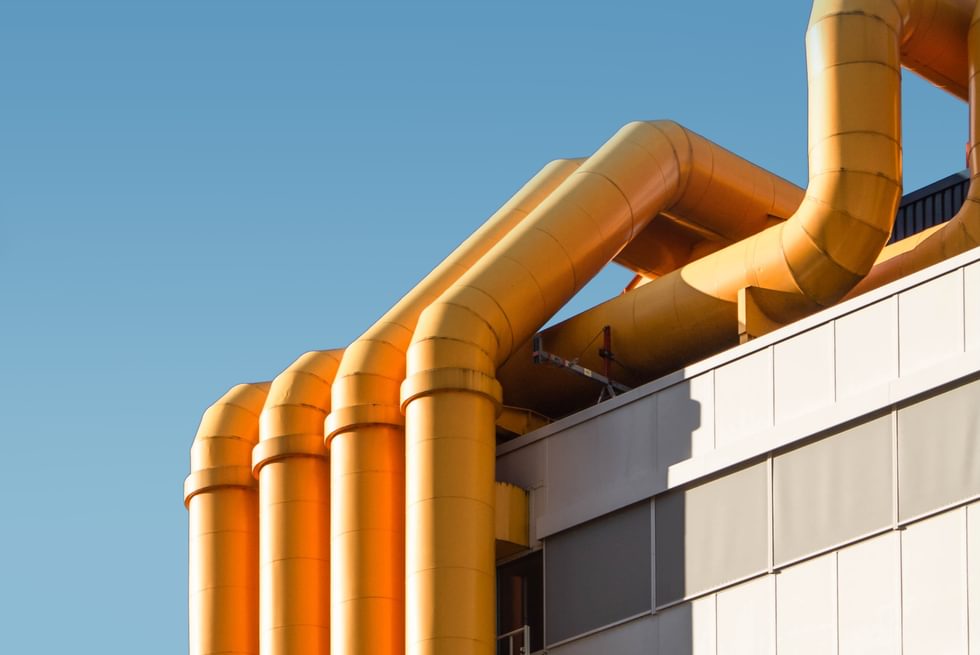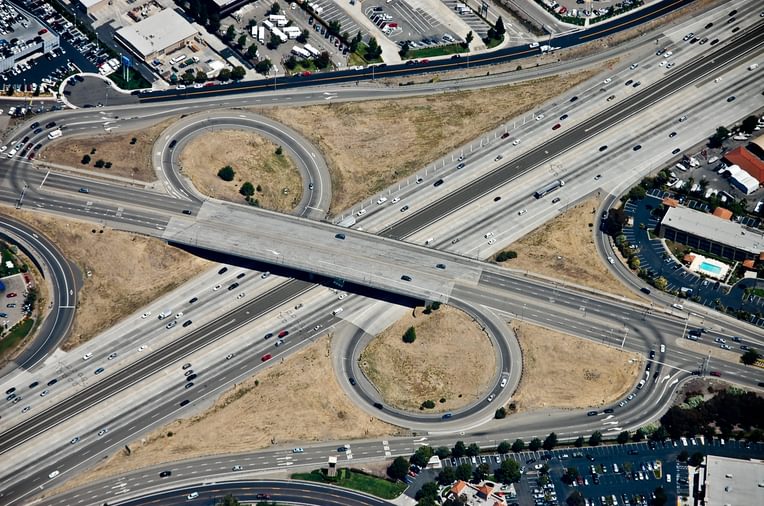Form
From the Series: The Infrastructure Toolbox
From the Series: The Infrastructure Toolbox

How can we think about the form of infrastructure? In recent years, the material turn has tended to prefer unformed synonyms: matter, material, objects, or things. These refer to substances in their unformed, elemental state. Form, here, is seen as a second-order, distinctively human activity, the imposition of aesthetic meaning through the semiotic arrangement of material in order to achieve an effect. Infrastructures are often seen to have an elective affinity with these unformed states in that they are taken as a primary technology upon which form is overlaid. The infrastructure of a house in this sense is its wires and pipes, sheetrock and steel, which delimits and makes possible the form that is laid on top. Architecture, the “extra-structure,” engages a world of form and aesthetics. Infrastructure lies unformed, hidden underneath.

As insightful as the work in new materialism has been, one effect of the turn toward an interest in matter and the like is to de-emphasize form and, with it, form’s role in political aesthetics.
We tend to think of infrastructures as assemblages that fulfill technical functions. But to exist, a road or an electric plant must take on form. Once it does, it has a mode of address that hails and constitutes subjects by virtue of that form. What these forms are, however, is complex. Some, like bridges and railways stations, are spectacular, the specific aesthetic ambition of architects or designers. For others, form emerges from the technical working of the object, which generates patterns that develop out of the operation of the infrastructure itself. However this takes place, form introduces the question of political aesthetics, which is as much a part of infrastructures as their technical functioning.
Russian formalists elaborated on the idea of form in their analysis of what they termed the facticity of literature, the concrete formal devices that made a literary text literary (Shklovsky 1965; Steiner 1995). These might be the use of rhyme, rhythm, and meter in poetry, chiaroscuro lighting and oblique angles in film noir, or noniconic imagery in abstract art. By this definition, form is made of discrete, observable things, what Boris Eichenbaum referred to as “a specific series of facts” (Steiner 1995, 12).
But form also refers to an activity or process, to the way in which those formal devices operate upon the people reading them. As Sianne Ngai (2012) has argued, form depends upon a set of agreements within a particular interpretive community. The rising tone accompanying the entry of a murderer into the house or the image of a cuddly dog licking its owner in a YouTube video invoke, respectively, fear and cuteness because of culturally defined expectations, not because they are inherently scary or cute. Form is never just about technical devices, but is also about a relation between those features and their interpretation. Form induces affective and cognitive dispositions by activating a set of shared assumptions and addressing people through the norms those assumptions encode. Ngai argues that our hypercommodified world of late capitalism makes distinct forms and the experiences they produce dominant. Victor Shlovsky (1965, 8) made a similar argument when he defined aesthetics as the formal arrangement of elements in order to achieve an effect, the “means of creating the strongest possible expression.” Form is thus a particular set of qualities and the power of those qualities to induce distinct experiential states.
One example of this process can be seen in Siegfried Giedion’s (1995) classic book Building in France, Building in Iron, Building in Ferroconcrete. In it, Giedion makes the argument that the emergence of new building materials, such as iron, radically reshaped architectural practice. Iron was the outcome of an industrial process. It could be produced in precisely engineered batches so that construction became a process of assembling, rather than building. For Giedion, this historical development made infrastructure revelatory of the entire structural transformation of industrial capitalism. What it reveals is the political aesthetics of form, operating in a Hegelian register as it encodes structural transformation in the economy and society. The argument here is similar to Siegfried Kracauer’s (1995) claim that the (mass) ornament is not merely an art-historical motif, but also an analytic for modern society—not a decoration, but a historical mode of subject formation.
Yet form does not simply express historical transformation as it acts on people to produce new experiences of the world. Iron, for instance, has a particular technics. It condenses immense amounts of weight, opening up interior space. Before iron, buildings of a certain height needed huge stone walls and thick internal columns to bear that weight, closing off space. Giedion’s (1995, 102) interest in iron was that it produced a radically new experience of air for nineteenth-century Europeans: “Through the condensation of [weight] to a few points, there appears an unknown transparency, a suspended relation to other objects, a creation of the airspace.” Iron introduces a new sensorial experience of space and codes it as new, historically meaningful, and opposed to the previous forms that organized everyday life (even as a streamlined modernism rose in opposition to the clutter of Victorian ornament). As form, infrastructure partakes of the aesthetic and all of the modes of desire, meaning, and fantasy that go into it. It is also the tactile way of living a new mode of capital.
Giedion, Siegfried. 1995. Building in France, Building in Iron, Building in Ferroconcrete. Translated by J. Duncan Berry. Santa Monica, Calif.: Getty Center for the History of Art and the Humanities. Originally published in 1928.
Kracauer, Siegfried. 1995. “The Cult of Distraction”. In The Mass Ornament: Weimar Essays, translated and edited by Thomas Y. Levin, 323–30. Cambridge, Mass.: Harvard University Press. Originally published in 1926.
Ngai, Sianne. 2012. Our Aesthetic Categories: Zany, Cute, Interesting. Cambridge, Mass.: Harvard University Press.
Shklovsky, Victor. 1965. “Art as Technique.” In Russian Formalist Criticism: Four Essays, translated and edited by Lee T. Lemon and Marion J. Reis, 3–24. Lincoln, Neb.: University of Nebraska Press. Originally published in 1917.
Steiner, Peter. 1995. “Russian Formalism.” In The Cambridge History of Literary Criticism, Volume 8: From Formalism to Poststructuralism, edited by Raman Selden, 11–30. Cambridge: Cambridge University Press.